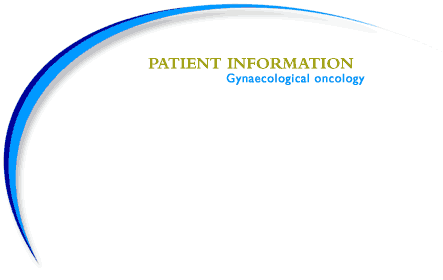|
Laparoscopically assisted radical
vaginal hysterectomy and radical trachelectomy
• Laparoscopically assisted radical vaginal hysterectomy and radical
trachelectomy are newer alternatives to radical hysterectomy. Performed
only in certain specialist centres, they are only suitable for small
cancers. They are carried out under general anaesthetic.
• For these keyhole surgery procedures, a small cut is made in
the belly button and the abdomen is filled with gas. A narrow telescope,
called a laparoscope, is then inserted so that the surgeon can see into
the abdomen. Various keyhole surgery instruments are passed though other
small cuts in the abdomen wall. The surgeon removes the lymph glands
in the pelvis through the small cuts.
• In a laparoscopically assisted radical vaginal hysterectomy,
the uterus, Fallopian tubes and, sometimes but not always, ovaries are
initially freed from their attachments using the laparoscope. The uterus
and its surrounding tissue, the cervix and the top part of the vagina
are finally removed through the vagina.
• In radical trachelectomy, the cervix and upper part of the vagina
are removed, but the uterus is left in place. The lymph glands in the
pelvis are also removed, usually by keyhole surgery. This is only suitable
for tumours caught in the early stage. As the uterus is left in place,
you can, potentially, still become pregnant. A stitch is made at the
bottom of the uterus, and this takes the place of the cervix in supporting
a pregnancy. A baby would be delivered by Caesarean section.
|
|
 |




